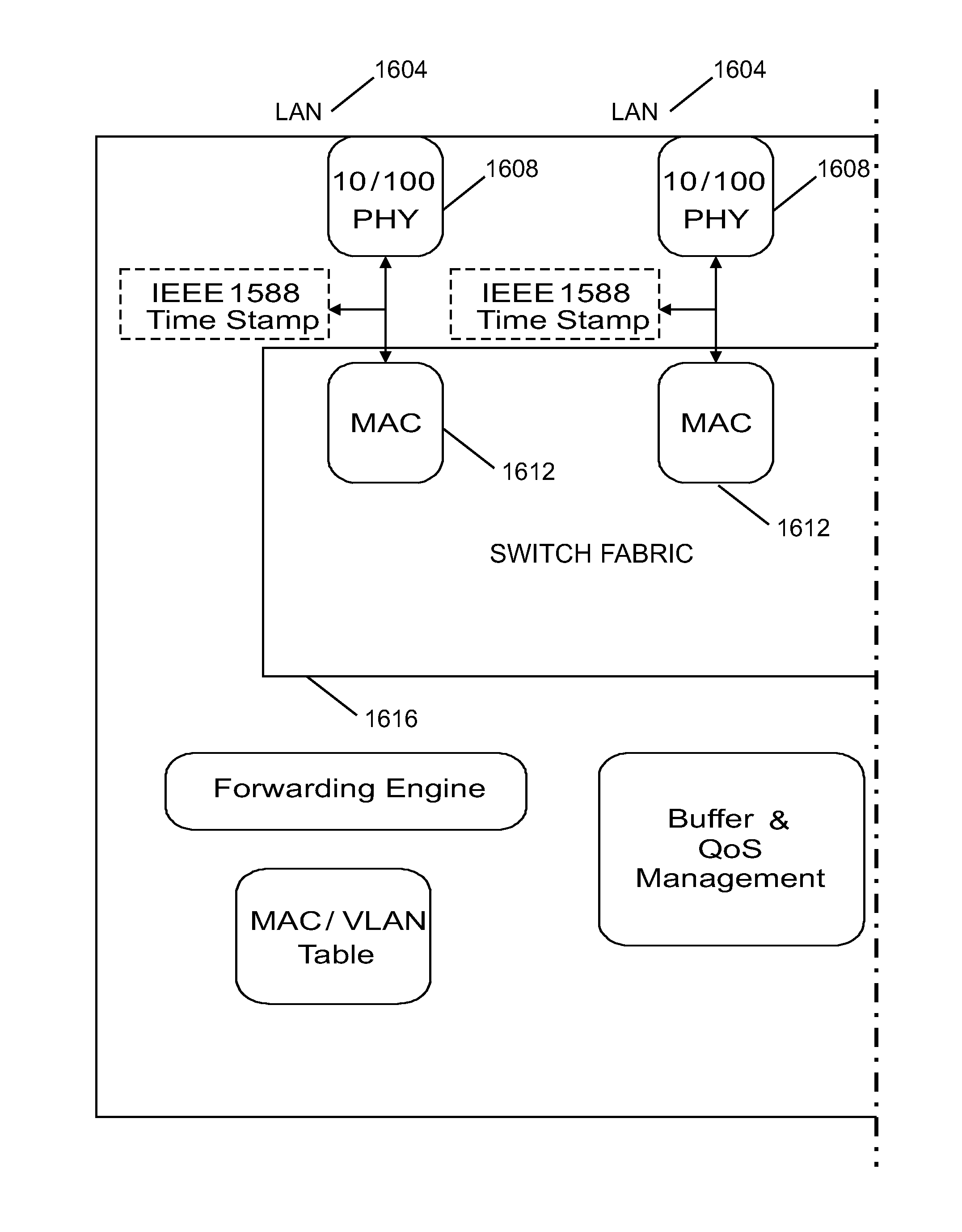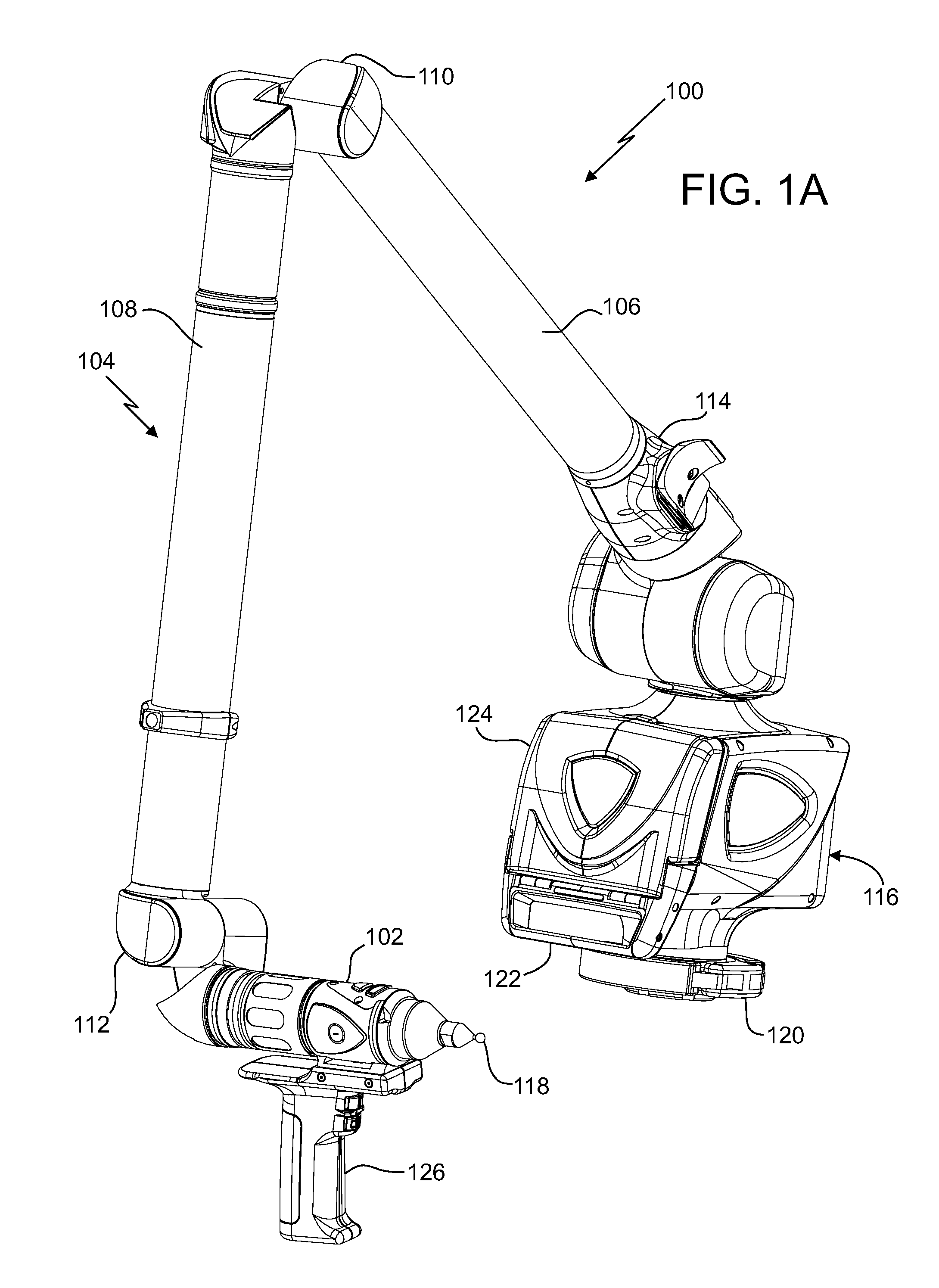Method and apparatus for synchronizing measurements taken by multiple metrology devices
a technology of metrology and measurement devices, applied in the field of time synchronization of measurements taken by multiple metrology devices, can solve the problems of affecting the accuracy of the measurement, the inability to accurately synchronize the measurement, and the inability to use the measurement installation at all, so as to achieve precise time synchronization and high accuracy
- Summary
- Abstract
- Description
- Claims
- Application Information
AI Technical Summary
Benefits of technology
Problems solved by technology
Method used
Image
Examples
example
Solve for ΔFreqCompValue to Adjust ΔFreqClk / FreqClk 1953 ppm.
[0153]
ΔFreqCompValue=2Q·FreqDivRatio·(1953·10−6)ΔFreqCompValue=67108863 (3FF FFFFh DP83640 correction value)
[0154]With regard to wireless network types, the network topology of an infrastructure wireless local area network (WLAN) is a point-to-point multipoint star, with a single central controller (e.g., a wireless access point or a wireless router), and one or more wireless clients (e.g., stations). Clients can connect to one and only one access point, and not to other clients. An access point can connect only to clients and not to other access points. An access point is similar to a base station in a cellular network, and may perform wireless-to-wired bridging. An access point may connect with a distribution system or backbone network, which typically is the Ethernet. In a larger office, or a large and oddly shaped residence, a single access point may not provide coverage out to the corners of the area. The overall 802....
PUM
 Login to View More
Login to View More Abstract
Description
Claims
Application Information
 Login to View More
Login to View More - R&D
- Intellectual Property
- Life Sciences
- Materials
- Tech Scout
- Unparalleled Data Quality
- Higher Quality Content
- 60% Fewer Hallucinations
Browse by: Latest US Patents, China's latest patents, Technical Efficacy Thesaurus, Application Domain, Technology Topic, Popular Technical Reports.
© 2025 PatSnap. All rights reserved.Legal|Privacy policy|Modern Slavery Act Transparency Statement|Sitemap|About US| Contact US: help@patsnap.com



